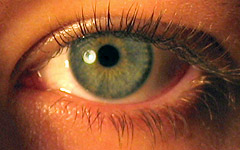If you believe the rumors, we might start seeing the next generation of full frame bodies from Canon as soon as next week with the 1DX II. First, I am likely to buy one of the next generation bodies, so I am interested. Not necessarily soon, as I am happy with my 5DIII, but somewhere between 2017 and 2019, as my 5DIII gets older and more actuations, that seems about right.
This was one of the topics of conversation when Mike (Busted Knuckles) and I got together a week ago to photograph birds at Merritt Island.
I tend to think of cameras as hardware and do not really believe in the "mirrorless revolution." As such, I am at the point where I expect incremental upgrades. But, Mike surprised me and got me thinking as he started talking about all the software upgrades that Canon could put in the next generation.
So, I was wondering what upgrades everyone else thought were possible with the next generation?
Regarding the 5D4. I have been wanting:
- Whatever improvement at high ISO they can give me for faster shutter speeds.
- Less noise in blacks for long exposures (nightscapes). I am hopeful the rumored on chip ADC will accomplish this.
- Linking exposure to AF point. Time for this feature to flow down from the 1DX.
- More powerful battery to better drive the AF. Ok, another 1DX feature.
- Faster write speeds to the SD card slot (if they even keep the SD card slot).
- 8-10 fps
- ~24-28 MP
- Wi-Fi where I can control the camera remotely from my phone.
- Same form factor. Same button layout.
Above would be about the perfect camera for me. But really I am only concerned with the first four. I often turn off the SD card slot. FPS, I end up with too many pictures to sort through anyway. More MP, I am pretty happy with 22 MP, but a few more might be nice. I only want wifi as I read that Roger likes to play with it on his 6D. I do want the same form factor. I do not tend to care about features that get a lot of discussion such as 4K video, GPS, more dynamic range (other than that gained by cleaning up blacks on long exposures), etc. In camera RT control of the flashes would be nice, but I already own the ST-E3. Not that I am opposed to their inclusion, as long as they are done well. I have also heard about a near silent shutter mode. Sure, that would be interesting, but mostly for other people.
To blow me out of the water and make me buy it soon? About 2-3 stop boost in high ISO performance as well as the features above. I do not think this is possible, but that is what would get my attention. The ability to shoot ISO 25600 as clean as ISO 3200 is right now.
But Mike also got me thinking about software upgrades and now I also want Canon to include a built in intervalometer and a time lapse video camera mode. A legitimate crop mode with increased fps and significantly decreased file size would also be interesting.
So, that is my list. I was wondering what others were thinking?




 Reply With Quote
Reply With Quote


 )... including some tricks to isolate a subject in a difficoult environment
)... including some tricks to isolate a subject in a difficoult environment



